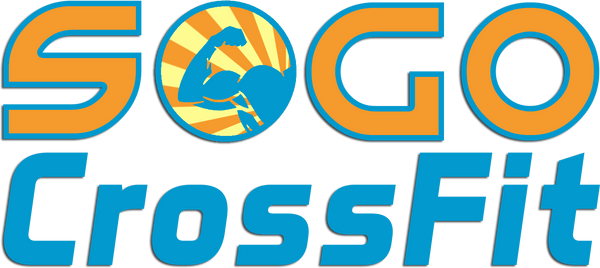Scaling the Workout? Me?!? No Way! : When scaling a workout makes the most sense!
The most beneficial thing about CrossFit as a global fitness option is its’ infinite scalability. It’s what allows new people to join us every day in the gym alongside members who have been there for years and all work side by side to complete a similar task. It’s what brings CrossFit athlete together and laugh to the “but did you die?” mentality. Its scalability helps promotes the constant competition and growth of individuals across the 10 fitness domains but particularly in speed, strength, and performance. Traditionally, Novice and Masters workouts are two written “scaled” options offered for athletes that provide different modifications for the prescribed (RX) movements for the Workout of the Day (WOD). But in reality, there are infinite options available for any movement that your coach will be able to provide you. As athletes train and develop skills in CrossFit, they typically move from Novice options to Masters, to RX, then some even move into Competition, a sort of RX+ level for those will highly developed skills. Somehow in the midst of growing as an athlete, scaling has gotten a bad reputation. There are many times when scaling makes sense for an athlete and is necessary simply to hit the desire stimulus that is intended for that workout for the day. It can include reducing weights, reducing reps, or changing the movement in a way that still targets the desired muscle group, but allows better range of movement for that athlete. Here are 3 times when an athlete should consider scaling:
- You can’t perform the RX movement – simply put, the skill level of the RX movement is too advanced for where you are in your CrossFit journey- this can include the movement itself, like Ring Muscle Ups, Strict handstand pushups or Handstand walks, or the weight prescribed to complete the movement, ie a thruster at 185# or a clean at 325#. In these two instances changing the movement to the progression just before the prescribed one or reducing the weight to be able to complete the task is necessary for the athlete.
- You have an injury or limited range of motion (ROM)– in some instances athletes may have overworked a particular muscle group, have a lingering pre-CrossFit injury or have a limited ROM may keep them from completing a workout in the prescribed way. In these instances, your coach will be able to modify the movement to fit your individual needs or substitute the movement for something similar that avoids the injured area but will still require a similar time and work requirement as what is prescribed that day.
- To hit the intended stimulus of the workout – each workout has an intended stimulus alongside it’s time domain. It’s intention may be to be light and fast with high volume of reps, or may be looking to hit lower volume, be a little slower and reaching the upper limits of your load capacity, ie be heavy. Understanding your abilities as an athlete and what your current capacity output is, should be something you are aware of going in to every workout. In a given AMRAP or Metcon, the coach should be giving you a goal of rounds or reps, and your job as the athlete is to hit that. (If you far surpass that goal, you likely went too light or need to increase the skill level you are performing at for the prescribed movement, however if you do not reach the intended goal, you likely went too heavy or tried to perform skills that are too advanced for your current fitness level. Let’s look at an example: If the workout is a 12 min AMRAP of 12 Burpees over the Bar and 12 Cleans and the weight is 135#/185#, with a goal of 6 rounds, that means you have 2 minutes to complete each round including breaks. Depending on your strengths, it may take you longer to complete the cardio portion of the burpees but the heavier cleans will not be a problem or vice versa. In order to compete the prescribed work in 2 minutes, not red line, and be able to continue to perform for the full 12 minutes to hit 6 rounds, you may need to consider reducing the 12 burpees to 10 or the weight of the cleans to 115/155#, in some instances maybe consider scaling both.
The third option really should be a factor every time you walk into the gym and should be considered in addition to #1 and #2. If you think back to the definition of CrossFit as “Constantly varied, functional movements performed at high intensity”, this is what we do every day. Your coach’s job is to ensure your workouts are constantly varied and to ensure your safety to be able to perform them at high intensity. Your job as the athlete is to bring the best version of yourself and give what you have to give that day. Scaling does not mean you are let off easy, in fact, in most cases scaling allows you to move faster and with better range of motion in order to hit the intended stimulus. Ego’s are left at the door. Though we are all glad you walked in the door, what weight you do or the movement you choose for a particular workout doesn’t matter, what matters is that you showed up and got to the point in the workout where you didn’t think you could keep going, but you did anyway! That is why we do this, that is what bonds us together!
Lindsay Marshall
CrossFit Level II Coach at SoGo CrossFit
